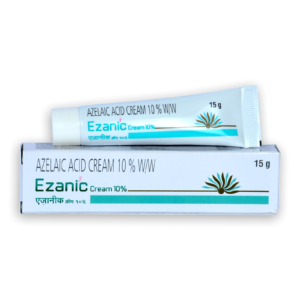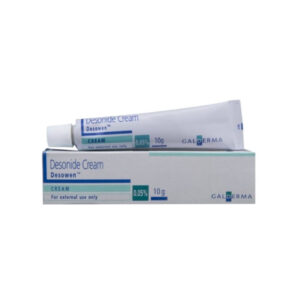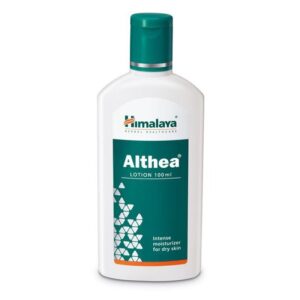Acitretin Information
Pronunciation
a si TRE tin
What is this drug used for?
• It is used to treat psoriasis.
• It may be given to you for other reasons. Talk with the doctor.
Possible side effects
Acitretin may cause side effects. Tell your doctor if any of these symptoms are severe or do not go away:
• Runny nose.
• Change in nails.
• Itching.
• Eye irritation.
• Dry mouth, eyes, skin, or lips.
• Hair loss.
Some side effects can be serious. If you experience any of these symptoms, call your doctor immediately or get emergency medical treatment:
• Signs of an allergic reaction, like rash; hives; itching; red, swollen, blistered, or peeling skin with or without fever; wheezing; tightness in the chest or throat; trouble breathing, swallowing, or talking; unusual hoarseness; or swelling of the mouth, face, lips, tongue, or throat.
• Signs of depression, thoughts of suicide, nervousness, emotional ups and downs, thinking that is not normal, anxiety, or lack of interest in life.
• Signs of high blood sugar like confusion, feeling sleepy, more thirst, more hungry, passing urine more often, flushing, fast breathing, or breath that smells like fruit.
• Mean actions or thoughts of fighting.
• Chest pain or pressure.
• Very bad dizziness or passing out.
• Shortness of breath.
• A burning, numbness, or tingling feeling that is not normal.
• Swelling, warmth, numbness, change of color, or pain in a leg or arm.
• Very bad muscle pain or weakness.
• Bone or joint pain.
• Change in eyesight, eye pain, or very bad eye irritation.
• Change in how contact lenses feel in the eyes.
• Change in hearing.
• Ringing in ears.
• Fever.
• Swelling.
• Weight gain.
• Stomach pain.
• Severe diarrhea.
• Bleeding from rectum or rectal pain.
• Severe and sometimes deadly pancreas problems (pancreatitis) have happened with this drug. This could happen at any time during treatment. Signs of pancreatitis include very bad stomach pain, very bad back pain, or very upset stomach or throwing up. Call your doctor right away if you have any of these signs.
• A very bad skin reaction (Stevens-Johnson syndrome/toxic epidermal necrolysis) may happen. It can cause very bad health problems that may not go away, and sometimes death. Get medical help right away if you have signs like red, swollen, blistered, or peeling skin (with or without fever); red or irritated eyes; or sores in your mouth, throat, nose, or eyes.
Medication Safety Issues
Sound-alike/look-alike issues:
Soriatane may be confused with Loxitane, sertraline, Sonata
Storage and Stability
Store between 15°C to 25°C (59°F to 77°F). Avoid high temperatures and humidity. Protect from light.
Adverse Reactions
>10%:
Central nervous system: Hyperesthesia (10% to 25%), paresthesia (10% to 25%), rigors (10% to 25%)
Dermatologic: Cheilitis (>75%), alopecia (50% to 75%), exfoliation of skin (50% to 75%), xeroderma (25% to 50%), nail disease (25% to 50%), pruritus (25% to 50%), erythematous rash (10% to 25%), paronychia (10% to 25%), skin atrophy (10% to 25%), acquired cutaneous adherence (10% to 25%)
Endocrine & metabolic: Hypertriglyceridemia (50% to 75%), increased serum glucose (fasting; 25% to 50%), decreased HDL cholesterol (25% to 50%), hypercholesterolemia (25% to 50%), acetonuria (10% to 25%), decreased serum glucose (fasting; 10% to 25%), decreased serum magnesium (10% to 25%), hypermagnesemia (10% to 25%), hyperphospheremia (10% to 25%), increased gamma-glutamyl transferase (10% to 25%), increased serum potassium (10% to 25%), increased serum sodium (10% to 25%), increased uric acid (10% to 25%)
Gastrointestinal: Xerostomia (10% to 25%)
Genitourinary: Erythrocyturia (10% to 25%), hematuria (10% to 25%)
Hematologic & oncologic: Leukocyturia (25% to 50%), reticulocytosis (25% to 50%), increased haptoglobin (10% to 25%), decreased hematocrit (10% to 25%), decreased hemoglobin (10% to 25%), increased neutrophils (10% to 25%), change in WBC count (10% to 25%)
Hepatic: Increased liver enzymes (25% to 50%), increased serum alkaline phosphatase (10% to 25%), increased direct serum bilirubin (10% to 25%)
Neuromuscular & skeletal: Increased creatine phosphokinase (25% to 50%), arthralgia (10% to 25%), spinal hyperostosis (progression; 10% to 25%)
Ophthalmic: Xerophthalmia (10% to 25%)
Respiratory: Rhinitis (25% to 50%), epistaxis (10% to 25%)
1% to 10%:
Cardiovascular: Edema, flushing
Central nervous system: Bell’s palsy, depression, drowsiness, fatigue, headache, hypertonia, insomnia, pain
Dermatologic: Abnormal hair texture, abnormal skin odor, Bullous skin disease, cold and clammy skin, dermatitis, diaphoresis (increased), madarosis, psoriasiform eruption, pyogenic granuloma, seborrhea, skin fissure, skin rash, sunburn
Endocrine & metabolic: Decreased haptoglobins, decreased serum albumin, decreased serum calcium, decreased serum iron, decreased serum potassium, decreased serum sodium, diaphoresis (increased), glycosuria, hot flash, hyperchloremia, hypochloremia, hypophosphatemia, increased serum albumin, increased serum calcium, increased serum iron, increased thirst
Gastrointestinal: Abdominal pain, anorexia, aphthous stomatitis, diarrhea, dysgeusia, gingival hemorrhage, gingivitis, increased appetite, nausea, sialorrhea, stomatitis, tongue disease
Genitourinary: Proteinuria
Hematologic & oncologic: Change in RBC count, decreased neutrophils, increased hematocrit, increased hemoglobin, reticulocytopenia, purpura
Hepatic: Increased serum bilirubin
Neuromuscular & skeletal: Arthritis, back pain, myalgia, ostealgia, osteoarthritis, peripheral joint hyperostosis
Ophthalmic: Blepharitis, blurred vision, cataract, conjunctivitis, diplopia, epithelial keratopathy, eye pain, nocturnal amblyopia, photophobia
Otic: Otalgia, tinnitus
Renal: Increased blood urea nitrogen, increased serum creatinine
Respiratory: Sinusitis
Miscellaneous: Ulcer
<1%: Abnormal gait, abnormal lacrimation, acne vulgaris, ageusia, aggressive behavior, alcohol intolerance, anal disease, angioedema, anxiety, bone disease, bursitis (olecranon), candidiasis, capillary leak syndrome, cerebrovascular accident, chalazion, chest pain, conjunctival hemorrhage, constipation, corneal lesion, corneal ulcer, cough, cutaneous nodule, cyanosis, cyst, deafness, decreased libido, diplopia, dizziness, dyspepsia, dysuria, ectropion, eczema, epidermal thinning, erythroderma, esophagitis, exfoliation of skin, exfoliative dermatitis, eye pruritus, fever, flu-like symptoms, fragile skin, fungal infection, furunculosis, gastritis, gastroenteritis, gingival hyperplasia, glossitis, hair discoloration, hemorrhage, hemorrhoids, hepatic cirrhosis, hepatic dysfunction, hepatitis, herpes simplex infection, hordeolum (recurrent), hyperkeratosis, hypersensitivity reaction, hypertrichosis, hypoesthesia, increased bronchial secretions, increased cerumen production, intermittent claudication, jaundice, laryngitis, leukorrhea, malaise, mastalgia, melena, migraine, myasthenia, myocardial infarction, myopathy (with peripheral neuropathy), nail disease (fragility), nervousness, neuritis, otitis media, pancreatitis, papilledema, peripheral ischemia, pharyngitis, prolonged bleeding time, pseudotumor cerebri, scleroderma, skin hypertrophy, skin photosensitivity, spinal hyperostosis (new lesion), suicidal ideation, tendonitis, tenesmus, thromboembolism, tongue ulcer, urticaria, vaginitis, voice disorder, vulvovaginitis, warts, weight gain, wound healing impairment
–






